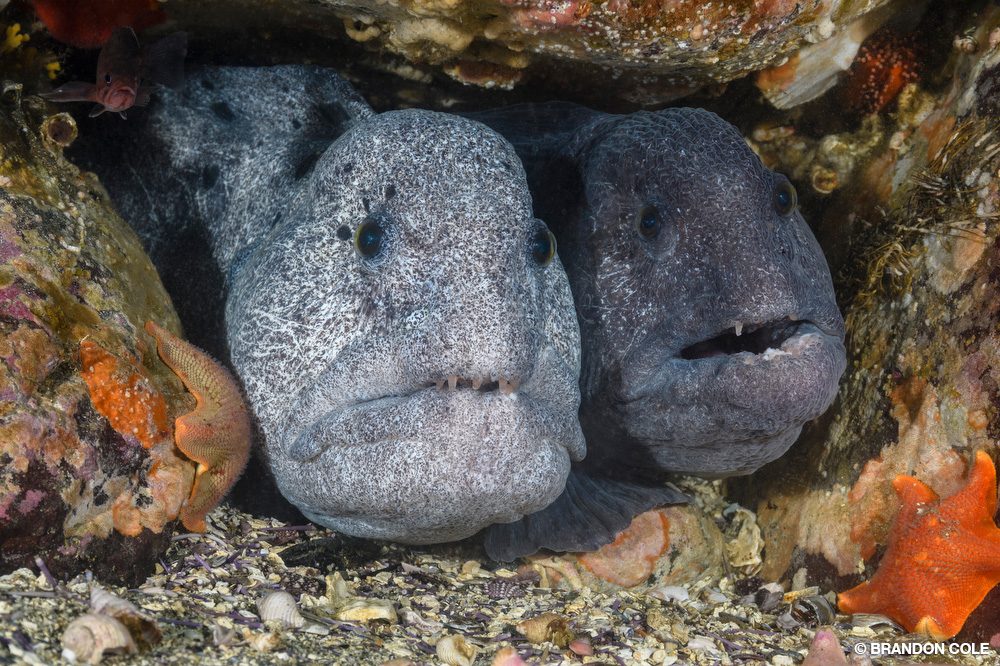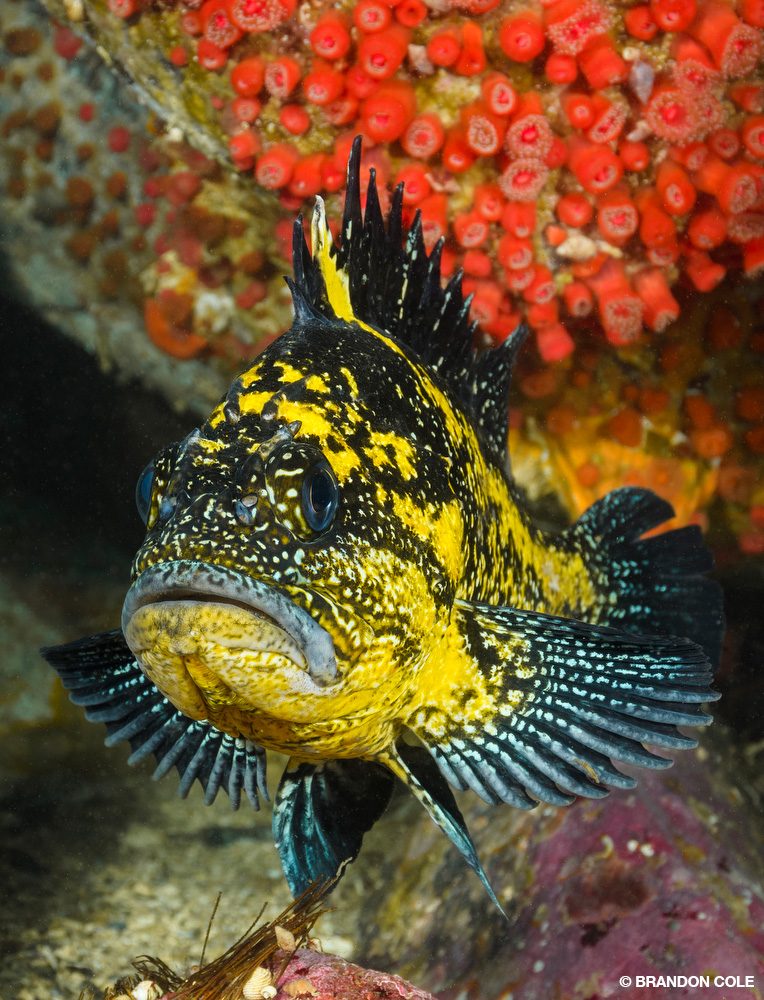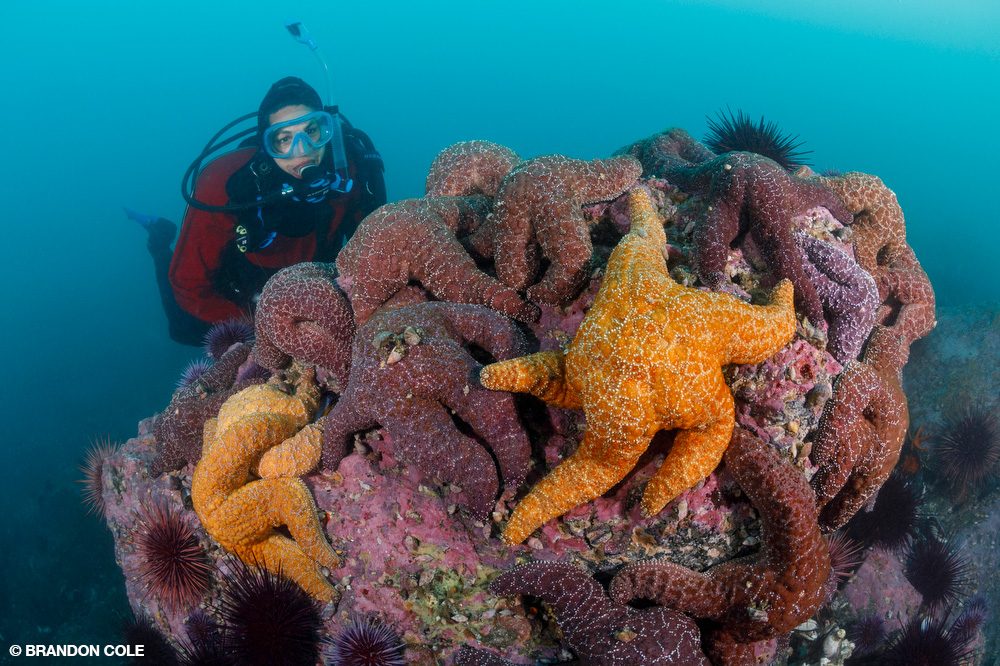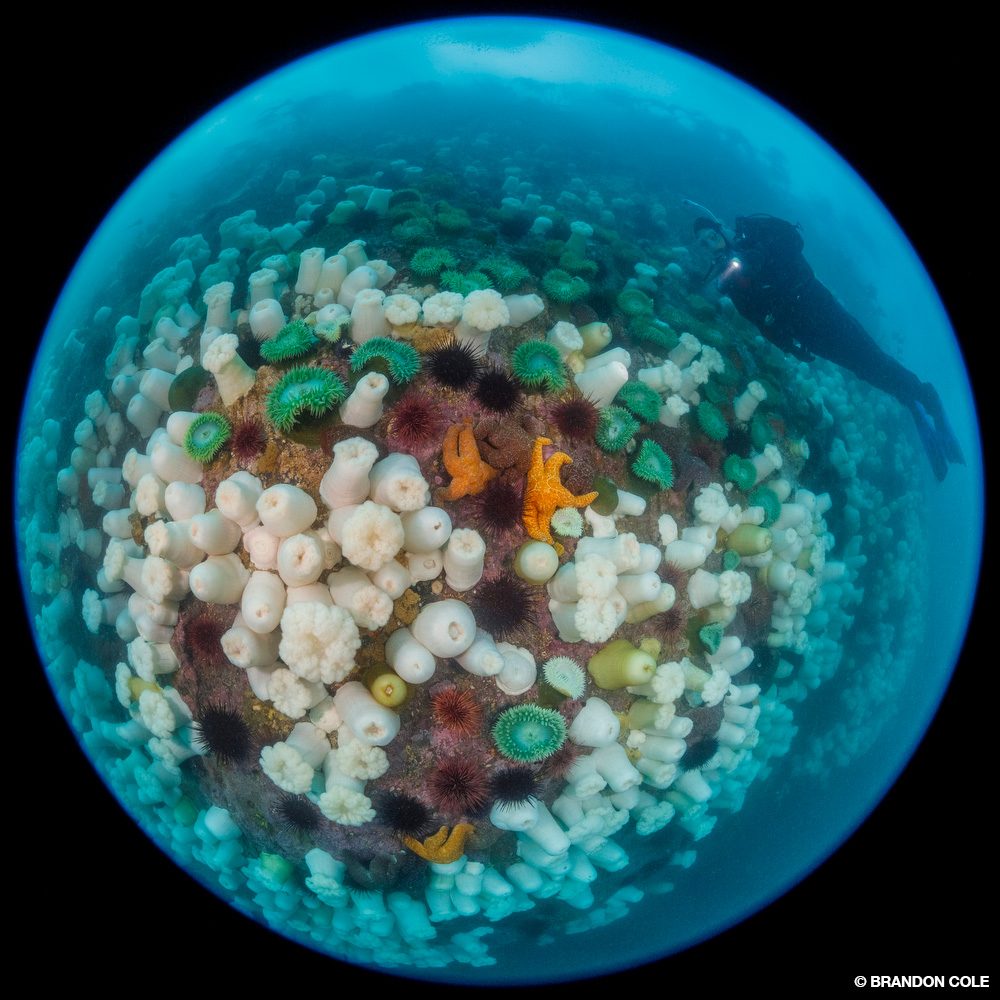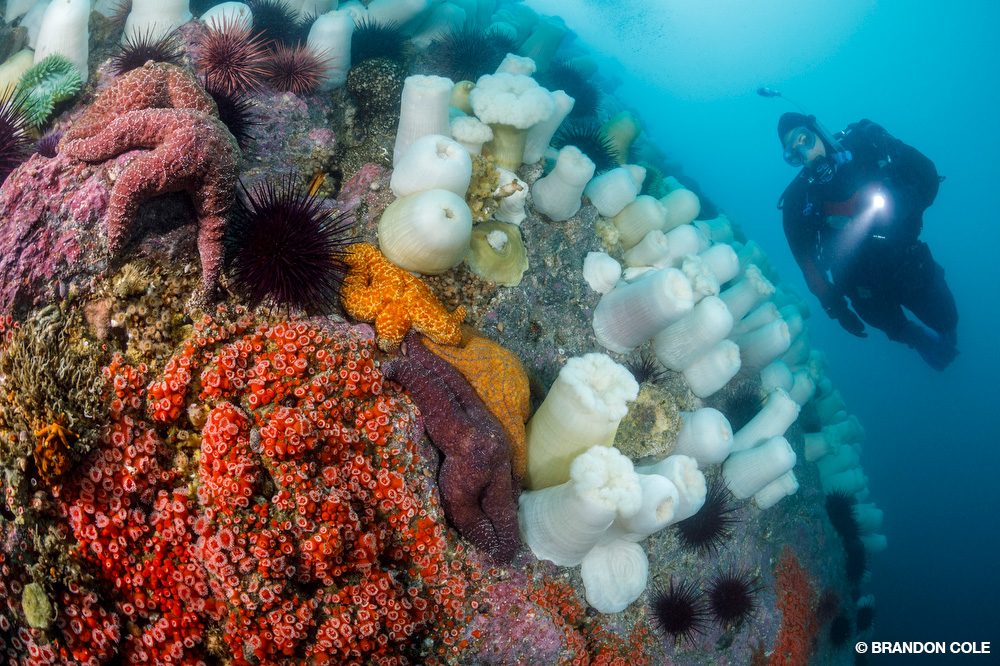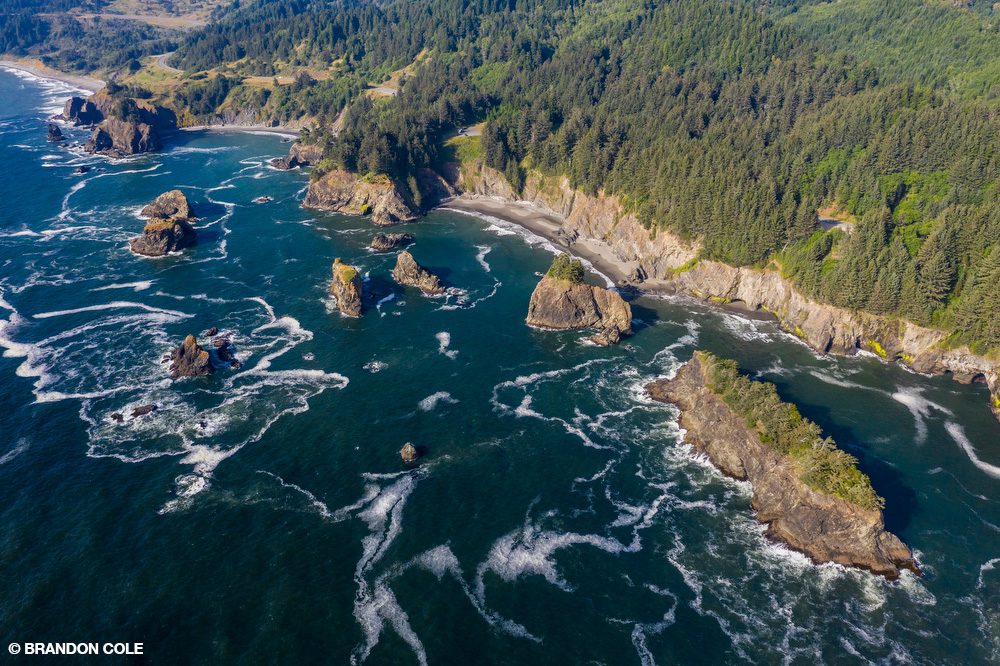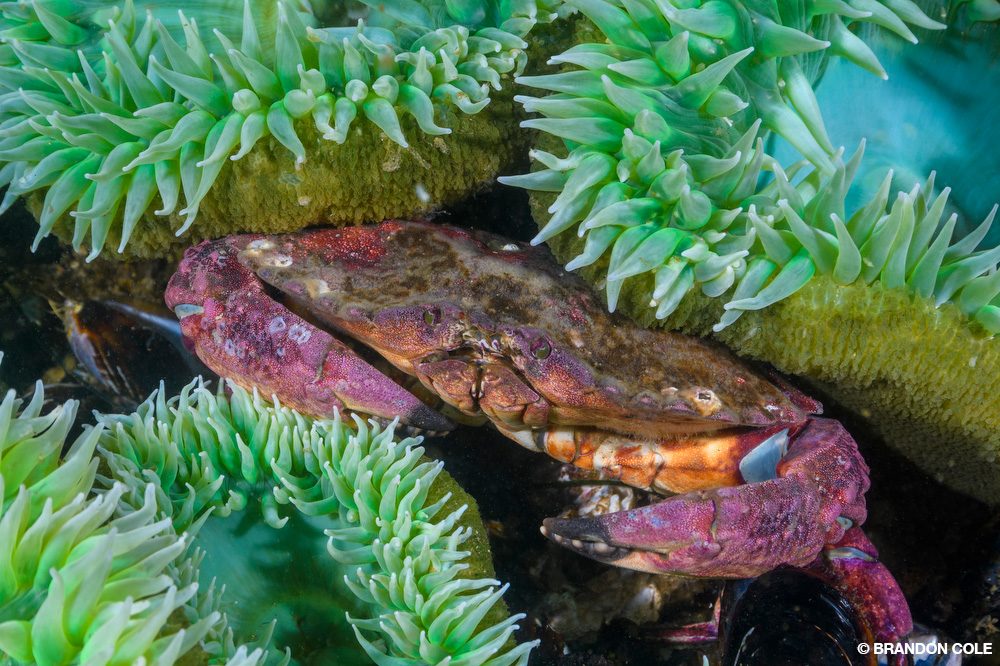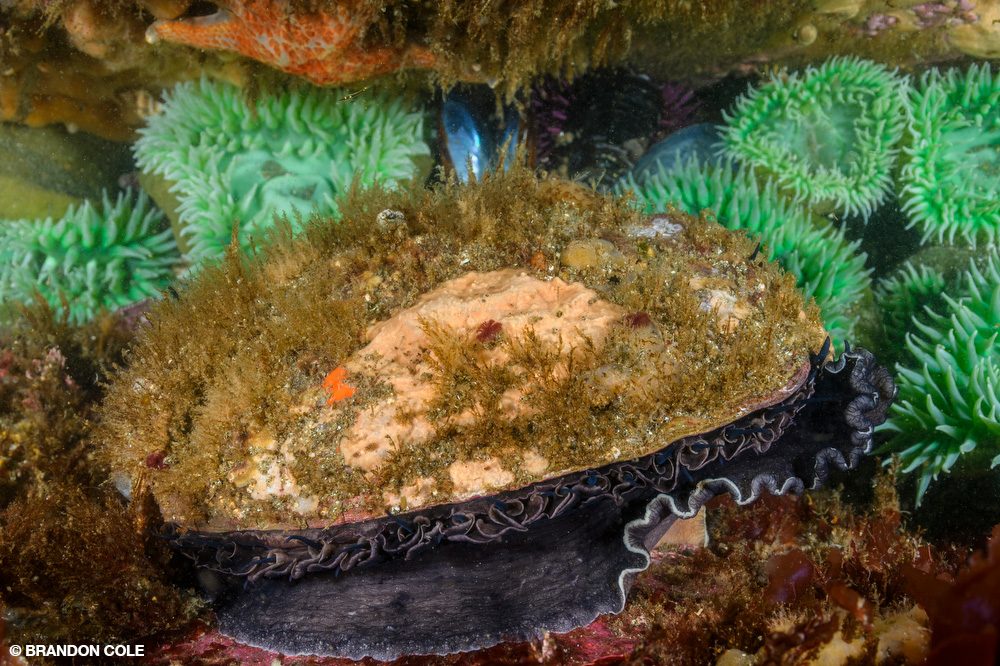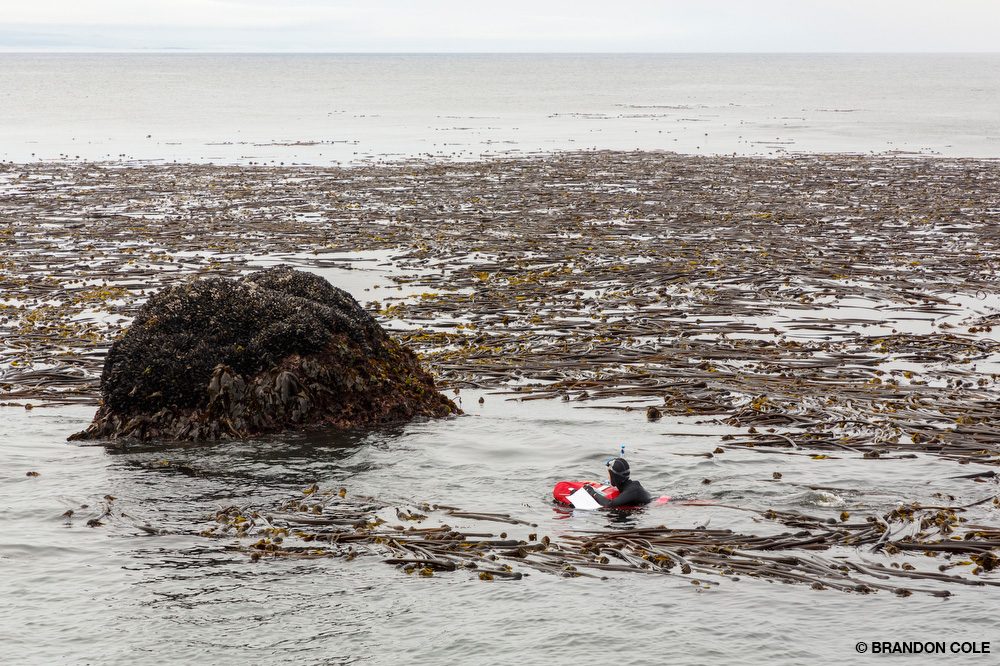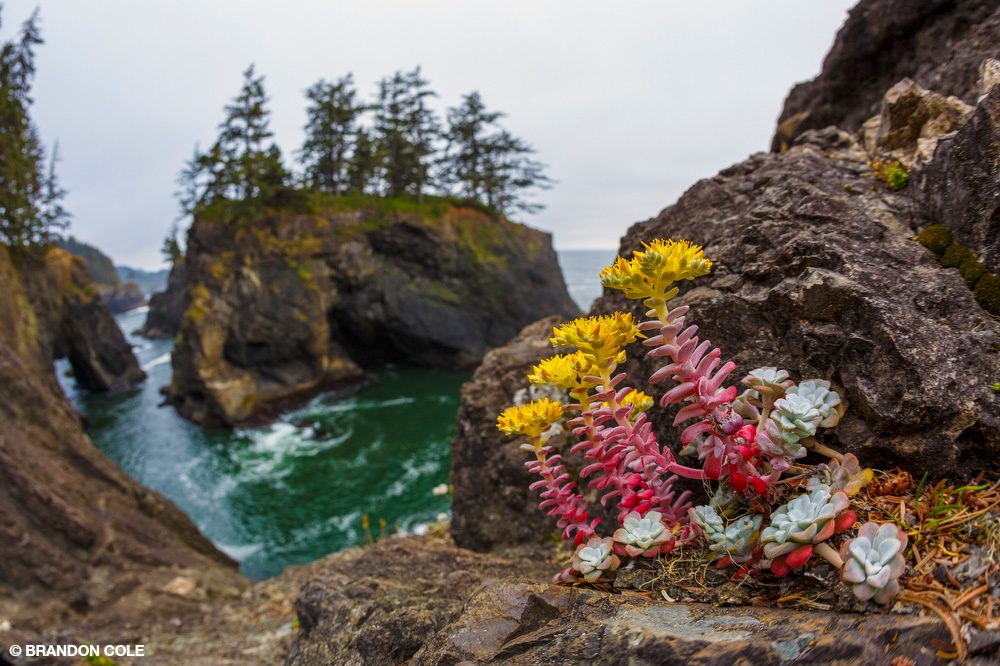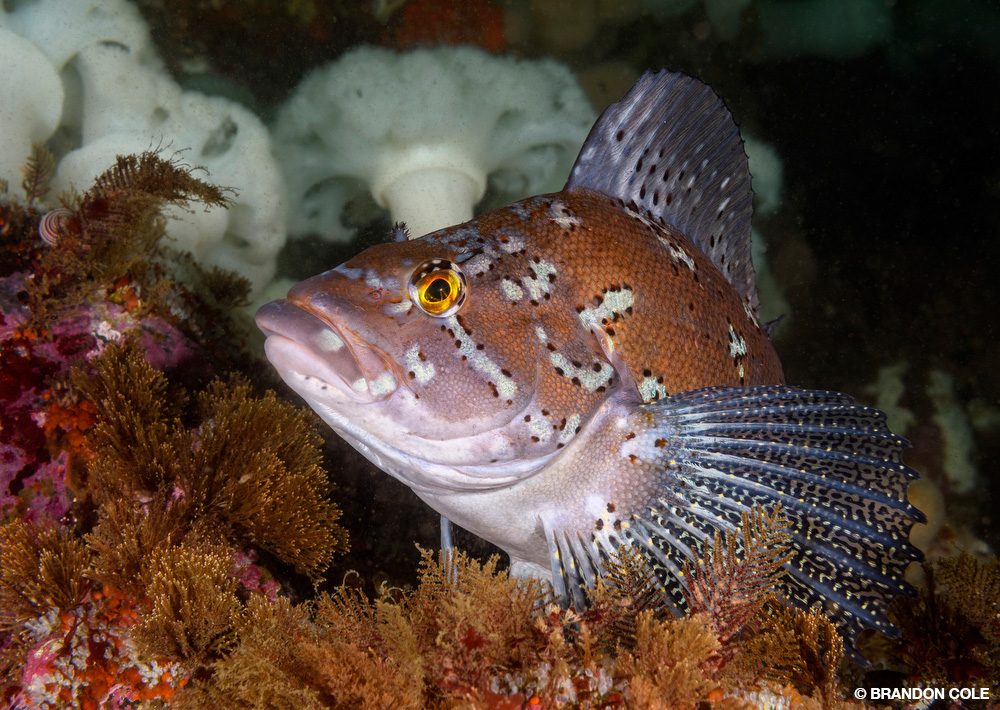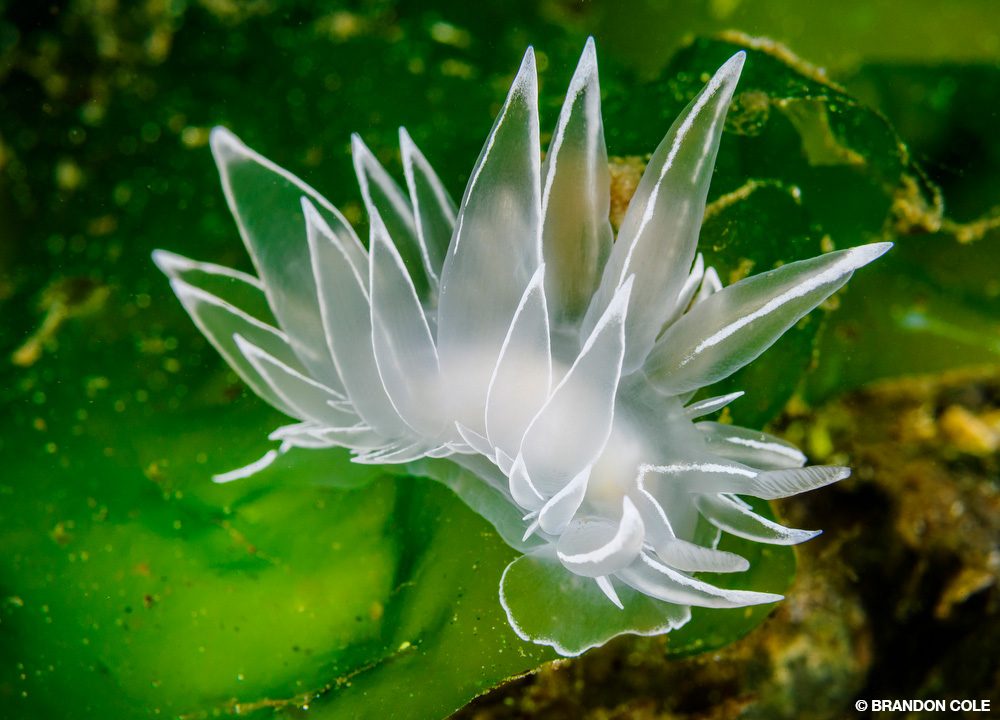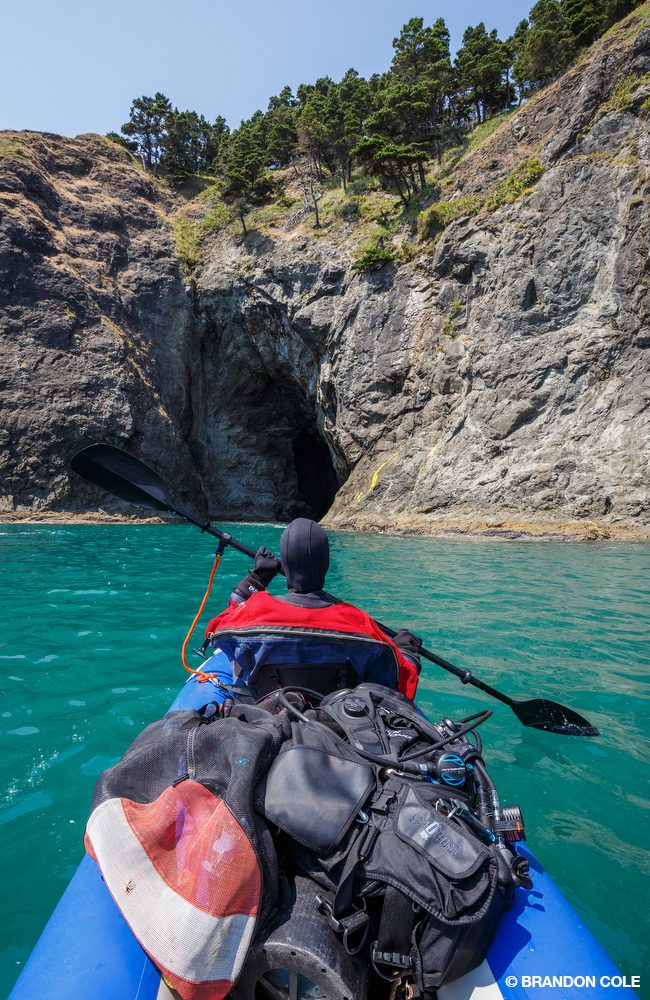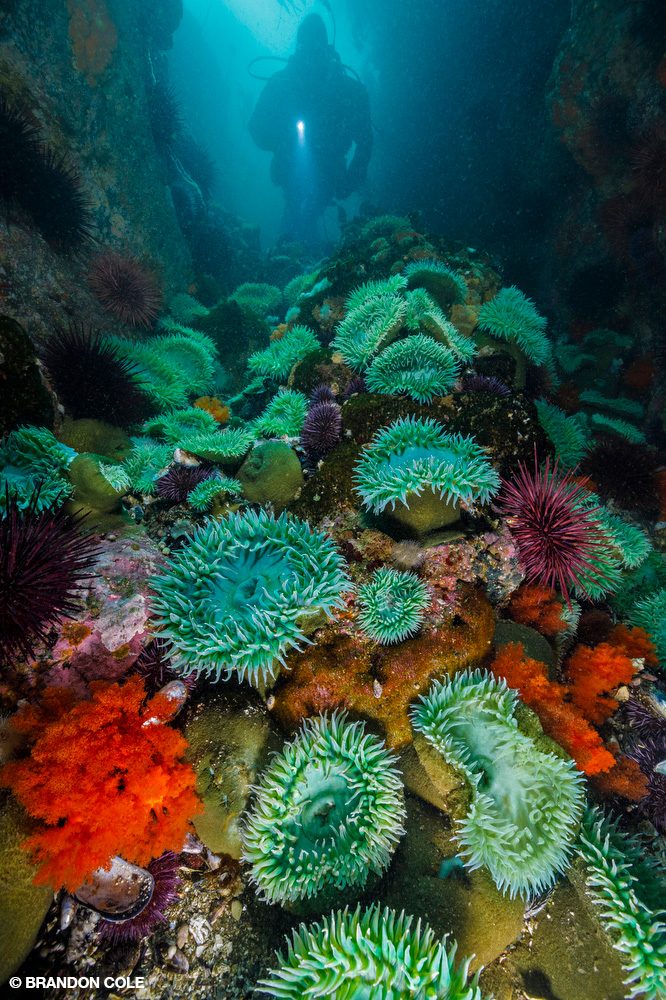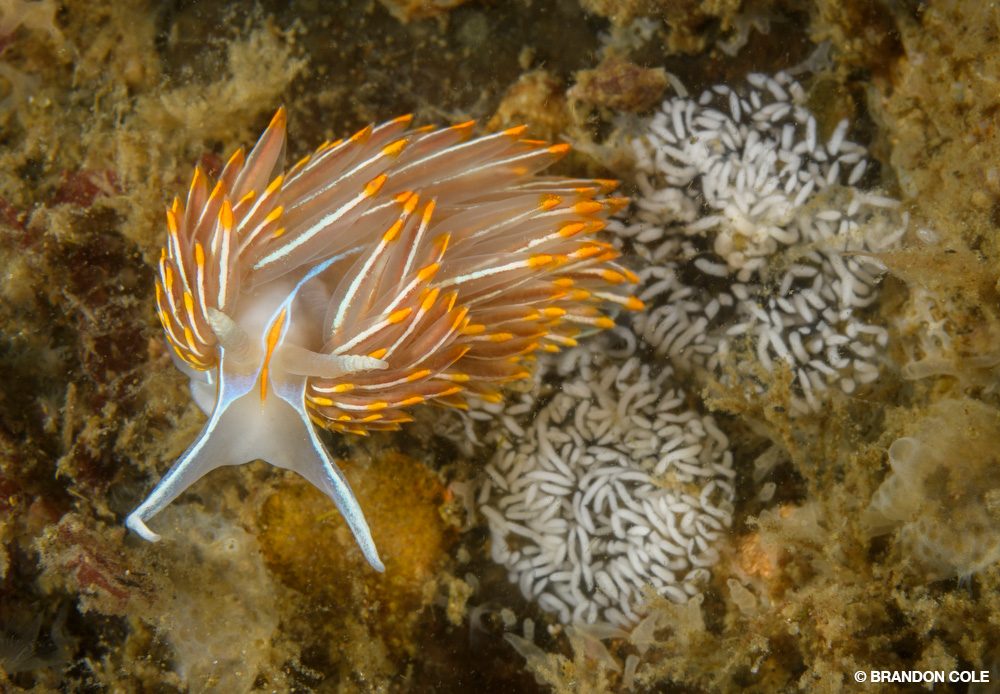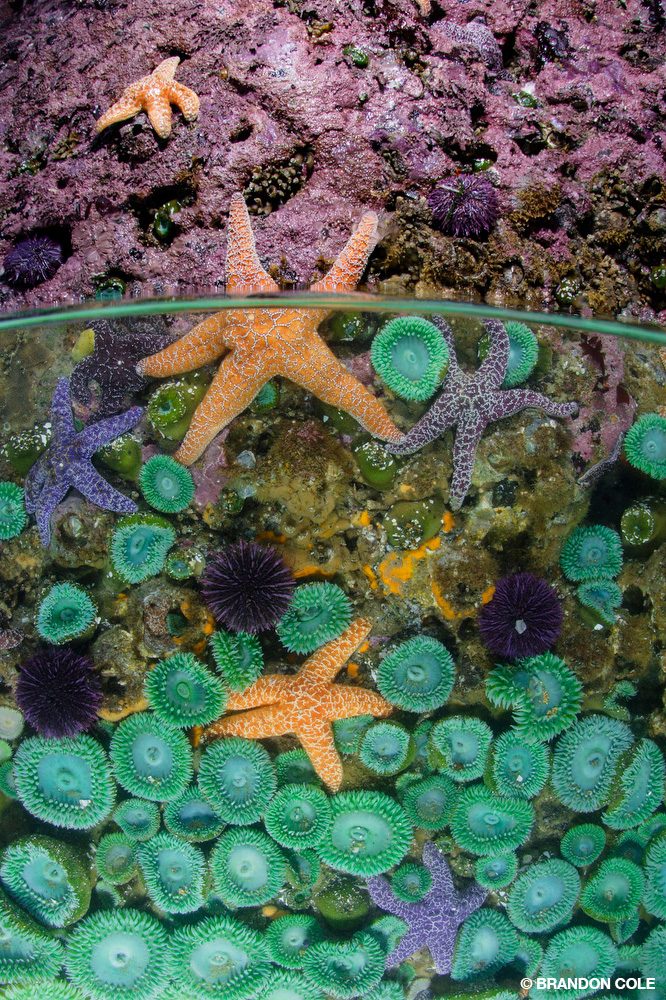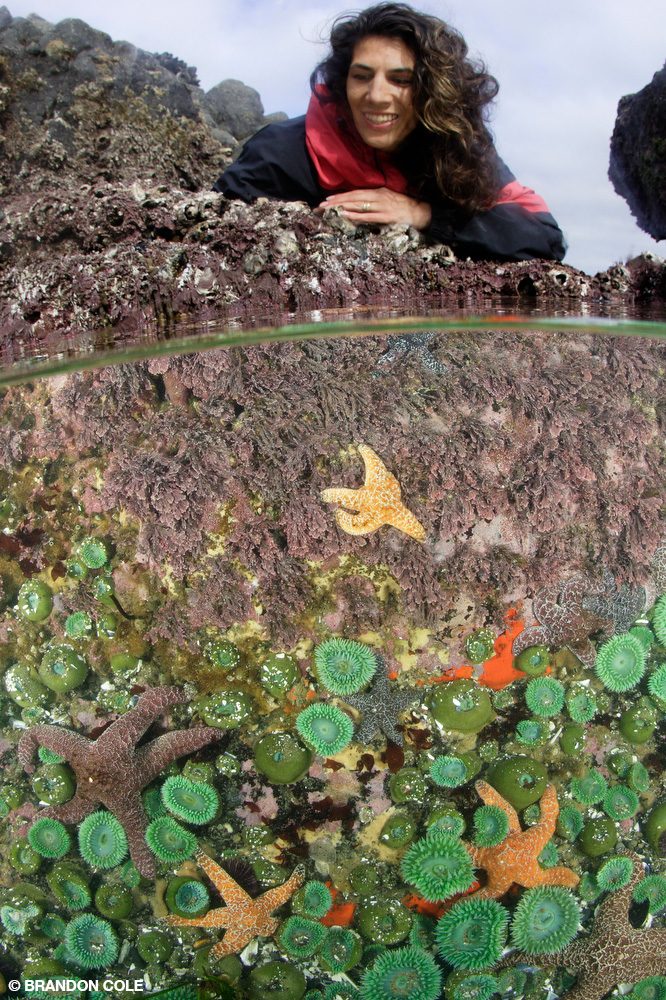OREGON IS A PERPETUALLY POPULAR West Coast travel destination, especially for climbing, skiing, walking through verdant forests, or strolling along sandy beaches. But scuba diving? Despite the fantastic diving in neighboring Washington and California, it rarely buoys up into conversations about Oregon’s marquee attractions.
I am not an expert, with just about 50 dives in Oregon, but I reckon the state’s undercelebrated dive status is due to the often-challenging sea conditions and limited, sometimes difficult access along the state’s 363-mile coastline. Cool marine life, hot colors, and dramatic underwater terrain are all part of a rewarding divescape for the intrepid divers who answer the call and take the plunge.
Jetties as Your Shield
Protecting many of Oregon’s dive sites from the sea are jetties, the rock piles or structures built to tame crashing waves. Local divers often first test the waters of North Jetty Dive Park in Florence during their certification course. This site on the Siuslaw River’s northern bank offers an easy shore entry thanks to its concrete-walled channel with stairs. Though not very colorful or critter-rich, it is a solid choice for learning to dive or testing gear.
Newport Fingers is a step up in marine life and access difficulty. Five breakwater structures (the fingers) create a rocky habitat down to about 30 feet between Yaquina Bay and the ocean. Sea stars, sea slugs, mats of green aggregating anemones with purple-tipped tentacles, gobies, hermit crabs, jingle shells, and a few rockfish and sculpins live along the third and fourth fingers. Scrambling over the large rocks from the parking lot to the water’s edge requires effort and care, so scout your route and move your gear in stages to keep at least one hand free. Currents can be strong here, so dive at high slack to minimize water movement and improve visibility. Watch for fishers operating their boats, casting lines, and trolling lures near any jetty dive sites.
The hooked breakwater right of the boat ramp at Netarts Bay can be a productive macro photo dive in only 15 to 30 feet. Carpeting the boulders are invertebrates such as fuzzy patches of phoronids and bouquets of delicate plumose anemones along with yellow boring sponges, pink-mouthed hydroids, and tangles of orange sea cucumbers. I have seen dozens, sometimes hundreds, of opalescent nudibranchs laying coils of eggs and elegantly crawling over the biological tapestry. Polka-dotted sea clown nudis and lemon dorids are huge for their species. Countless crabs — red rock, northern kelp, Dungeness, and decorator — have watched me swim about. Eel-like monkeyface pricklebacks, which are weird and reclusive fish with large lips and lumpy heads whose wrinkled countenances remind me of ashen-faced apple dolls, are another highlight.
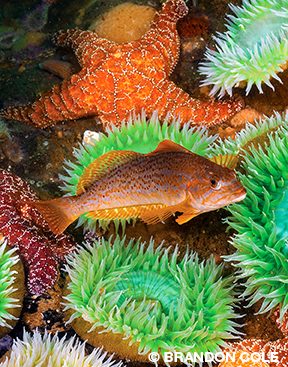
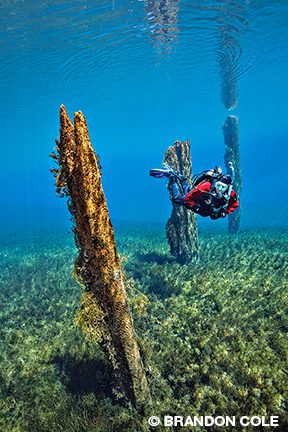
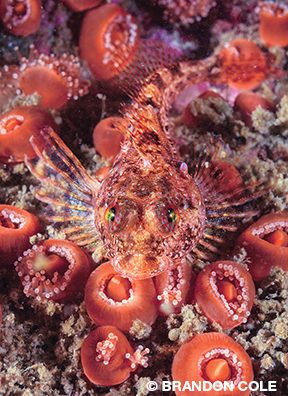


Nearshore Natural Reefs
On fair weather days without big swells and surge, consider diving more exposed real estate. Reaching some reefs means undertaking a short swim of 50-100 yards, others 500 yards or more. I launched a kayak off the beach at Sunset Bay State Park to easily cover 900 yards to reefs outside the main bay. The kayak likewise motivated me to dive spots otherwise off-limits in the Port Orford area, including a nice washrock outside the breakwater at Graveyard Point, a sloping wall in front of Nellies Cove, and the more distant Tichenor Rock. The shallows at Tichenor Rock were a kaleidoscope of green, orange, purple, and red echinoderms and cnidarians. Rocky outcroppings from 50 to 70 feet deep were fishier. At 85 feet, where the rock slope gradually meets flat sand, I found bubblegum-pink gorgonian fans the size of my hand. I had never seen this species before in the Pacific Northwest.
Three Graces in Tillamook County is closer to shore, and entering at high tide makes the short swim out to the eponymous sea stacks more pleasant by helping you avoid the ankle-twisting intertidal terrain. During the enjoyable 75-minute dive, I saw two crabs fiercely fighting over a clam, two others locked in an amorous embrace, juvenile rockfish, painted anemones, stalked jellyfish on eelgrass, and much more.
My favorite nearshore natural reef in Oregon is Zwagg Island near Brookings in the state’s southwestern corner. Seas are often too rough to allow comfortable exploration of the cluster of wave-battered washrocks that break the surface 300 to 400 yards off the beach, but when the tempestuous Pacific calms, there is breathtaking diving in 15 to 30 feet of water.
Winding passageways are wallpapered with hundreds of glowing green surf anemones, a constellation of sea stars, lightbulb tunicates, and bright-orange glove sponges. Greenlings and surfperch glide about on the sea thermals, rockfish perch here, and a camouflaged cabezon lurks there. Clumps of raspberry soft corals decorate the rock faces, and I found a pizza-sized red abalone munching away on drift kelp. Oldsters like this, called “hubcaps” by my veteran freediving friends in Northern California, are a rare sight these days. May these superlative snails continue to feast in peace and never know a harvester’s grasping hand.



Fallback to Freshwater
Oregon’s coast is exposed and capricious, but divers can find respites in two lakes when the weather is bad. Woahink Lake, south of Florence on the east side of Highway 101, has a state-designated dive park, where shops regularly conduct dive training. Bass, trout, catfish, and shrimp inhabit the shallow freshwater lake, where various purpose-sunk objects amuse divers: a Buddha statue, pirate chests, small boats, and railroad boxcars, with new oddities added often.
In the Cascade Mountains, about 100 miles east of the ocean, Clear Lake offers a different freshwater dive experience — colder (averaging 38°F), clearer (150-foot visibility), higher (altitude 3,012 feet), and without plastic garden gnomes. Instead, it features ancient, algae-bearded trees beneath the surface. Though long dead, many submerged trunks still stand upright in the forever visibility, protruding from fine ash on the bottom that speaks to the lake’s volcanic origin story.
tide pools exposed during a summer’s extreme low tide at Cape Perpetua on the central Oregon coast
Offshore Nirvana
When sea conditions are good, you can launch offshore to the islets, sea mounts, and pinnacles that represent the pinnacle of Oregon diving. Redfish Rocks Marine Reserve features five islets with a dramatic seafloor beneath sheer walls riven by surge channels, shelving slopes, and boulder fields.
I found huge Metridium anemones and a rugby scrum of fat ochre stars. A thicket of bull kelp — which has sadly been lost here and in Northern California due to hungry urchins and warming waters — made me smile at the amber forest swaying to and fro. Not bothered by my presence, the hovering schools of black and deacon rockfish and the lazy lingcods lounging about proved that protection from hooks and spears is working in this reserve.
Redfish dives rank as my best in Oregon, right up there with a lucky splash at Island Rock, a majestic basalt sea stack that stands guard against the incessant assault of weather and waves. Along with flirting male and female kelp greenlings, I encountered a mated pair of wolf-eels that graciously posed while peering out from their rocky love nest. I counted six rockfish species but focused my efforts on spectacularly painted black-and-yellow China rockfish. The territorial creatures boldly displayed themselves in front of dens and patrolled the perimeters of their home turf. In addition to the usual jumble of plumose anemones, spiny urchins, and giant barnacles, fuchsia-hued coralline algae, red strawberry anemones, beige tunicates, and iridescent algae cover the rocks.
Oregon has its hooks in me. There is an irresistible pull to dive where few have. Others can ascend mountains; I will weather the ocean’s mercurial moods. When it holds its breath and calm prevails, I must descend into the shadowy halls of the deep. I will continue my unending journey into the challenging, invigorating, exasperating, but ultimately rewarding swirling seas to uncover wonders hiding in plain sight.
Coastal water temperatures range from the upper 40s°F to upper 50s°F depending on the season, location, and upwelling.
Dive most sites at high tide for better visibility and during slack on days with small exchanges for less current.
How to Dive It
Conditions: There is no true dive season — good or bad conditions are possible anytime — but spring through fall usually presents more dive days per month. Flexibility is important along with training, fitness, and skill competency. Oregon diving features physically demanding shore entries, strong surge, wave action, often poor visibility, and squirrelly currents.
Coastal water temperatures range from the upper 40s°F to upper 50s°F depending on the season, location, and upwelling. Visibility generally ranges between 5 and 15 feet but can be up to 40 feet on a good day. Offshore reefs often have better clarity than nearshore reefs and river mouths. Dive most sites at high tide for better visibility and during slack on days with small exchanges for less current.
Dive Support: Network with experienced local divers willing to share their knowledge about marine life and site selection based on current conditions. The state’s dive shops are mostly in interior cities. As of this writing, gas fills and gear rental and sales are limited on the coast, so be sure to plan ahead. Some shops occasionally arrange special boat charters to dive various locations, weather permitting. One dive charter boat operates in the Port Orford area between April and October, and another occasionally embarks out of Newport. Other than these options, boat diving along the Oregon coast is mostly a bring-your-own-boat affair.
© Alert Diver — Q2 2023
